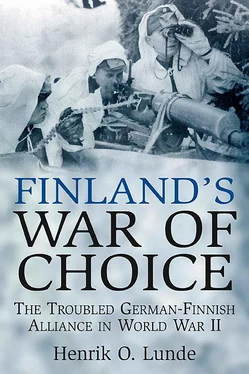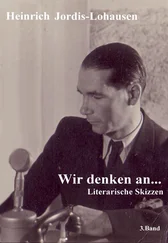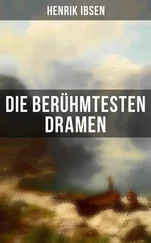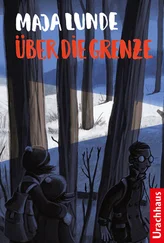The Winter War
The Soviet Union attacked Finland on November 30, 1939, hoping for a quick victory. However, the attack bogged down with the Soviets suffering heavy losses. After regrouping and bringing up reinforcements, the Soviets resumed their offensive on February 1, 1940. It was to last for forty-two days. The Soviet attack on the Karelian Isthmus was backed by thirty infantry divisions reinforced by strong artillery and armored forces. 27After two weeks of ferocious fighting resulting in enormous Soviet casualties, the Mannerheim Line was breached on February 13 and by March 1 the Finnish right flank had been pushed back to the city of Viipuri. The situation for the Finns had become desperate. They were short of supplies and their troops were exhausted. The hoped-for—and promised—assistance from the West had not materialized. The total number of foreign volunteers in Finland numbered only 11,500 and 8,275 of these were from Scandinavia—mostly from Sweden. The volunteers also included 300 men in the Finnish-American Legion who received their baptism of fire in the last days of the war. 28
Blücher suggested to Berlin that under the circumstances that had developed since the outbreak of the Soviet-Finnish War, as well as the exhibition of Soviet military weakness, that it might be possible to adopt an entirely different tone toward Moscow (compared to that of August and September). Furthermore, he pointed out that a Soviet alignment with the Western powers was out of the question since she had seriously compromised herself in these countries through her actions in Finland. 29
The policy advocated by Blücher in his letter was exactly that which was followed unofficially by the German government in the months that followed. This unofficial attitude came in the form of hints through official and unofficial German channels that the Soviet Union should come to an agreement with Finland.
The consequences of the Soviet-Finnish War for Germany began to be felt increasingly in January 1940. The drawbacks were outlined on January 25 by an official of the German Embassy in the Soviet Union. 30He emphasized the dwindling supply of raw materials from the Soviet Union to Germany and the danger that the rest of Scandinavia might be drawn into the conflict on the side of Britain and France. Much weight was placed on the fact that the inherent weakness of the Red Army had been revealed in Finland.
The French and British governments offered to send an expeditionary force if the Finns formally asked for it and if Norway and Sweden provided transit facilities. But it was not until March 7, one week before the end of the war, that General Sir Edmund Ironside, chief of the British Imperial General Staff, was able to inform Finland that a force of 57,000 men was ready and that the first division of 15,000 men could be at the Finnish front before the end of the month. 31Actually, five days previously, both Sweden and Norway had denied transit for troops on their way to Finland. Finland was undoubtedly aware of this and, like the other Scandinavian countries, harbored strong suspicion that the actual objective of the Allies was to seize the iron ore fields in north Sweden from where Germany received so much of her high-grade iron ore.
In general, the Western powers welcomed the possibility of a continuation of the Soviet-Finnish War. They hoped that by helping Finland, Norway and Sweden might be brought into the anti-German block, and even if this did not materialize, the iron ore that Germany received from Sweden could be cut off. A continuation of the war would disrupt the Soviet economy and economic aid to Germany from the Soviet Union would suffer. This, on top of possible British control of the Baltic, could be disastrous for Germany.
The actions taken by the Allies were of course known to the Germans and made them increase their indirect efforts to get the Soviet Union to reach a settlement with Finland. The Swedish Embassy in Moscow was the main channel used by the Germans. 32
Increasing pressure for German intervention in the negotiations was also placed on the German Foreign Office by German officials in Moscow. Ribbentrop told Blücher on February 13 that it was possible that Germany might mediate in the Soviet-Finnish conflict in the future but he did not state when or how. 33Blücher suggested to Foreign Minister Tanner on February 1940 that a person respected by the Soviets should meet secretly with some Russians in a third country, preferably Germany, to iron out their differences and arrive at an agreement. 34This proposal was presented to Ribbentrop, who was requested to feel out Moscow’s attitude. These negotiations never materialized, apparently because the Soviets scored their first military victories a few days later.
In a telegram on March 12, Schulenburg stated that it appeared that negotiations arranged by Vilhelm Assarsson, the Swedish ambassador in Moscow, would come to a standstill because of renewed Soviet demands. He asked for permission to hint to Molotov that Germany would welcome a positive conclusion to the negotiations. 35
Before an agreement was reached between Finland and the Soviet Union through Swedish mediation, the Soviets tried to use Great Britain as an intermediary. The Soviet ambassador to Britain, Ivan Maiski, asked Lord Halifax, the British foreign secretary, on February 26 to transmit the terms that had already been handed to Finland through Sweden but had been rejected because they were too harsh. 36Lord Halifax answered that he considered the terms unreasonable and refused to transmit them. Maiski then threatened that this British attitude might lead to unexpected developments between Britain and the Soviet Union. Lord Halifax answered that it was hard to prevent conflict between the two nations if the Soviet Union continued its present policy.
Lord Halifax’s statement may have convinced the Soviets that they needed to come to terms with Finland or run the risk of war with England and France. At the beginning of March 1940, the Soviets apparently felt that their recent military successes allowed them to soften their terms without a loss of prestige and thus avert Allied intervention.
The Soviets extended an invitation for a Finnish delegation to come to Moscow to discuss armistice terms. The delegation arrived in Moscow on March 7. The Finns, having committed all their trained manpower, and with no hopes of help, agreed to the Soviet demands which were incorporated in the Peace of Moscow on March 12, 1940. The terms—while harsh—were nevertheless not as severe as some had expected, probably because Stalin wanted to terminate the conflict before the Allies could intervene. The cool attitude displayed by Germany was also seen by the Soviets as a warning sign.
While the Soviet losses in the Winter War have never been published, most observers believe that more than 200,000 were killed and a much larger number wounded. The Finns lost 24,923 killed and 43,557 wounded. 37This was an enormous loss for a nation with a population of only 3.75 million.
Aftermath of the Winter War
The territorial losses resulting from the Winter War amounted to about 64,750 square kilometers or about 10 per cent of Finland’s total prewar area, containing about 12 per cent of the population. The Karelian Isthmus, including the province and city of Viipuri, and a large piece of territory north of Lake Ladoga were lost. The loss in resources and manufacturing capacity was devastating. The losses in agricultural lands, forestry, and production of forestry products were almost as severe.
Also lost were several islands in the Gulf of Finland, part of the Rybachiy Peninsula in the far north, and large segments in the Salla-Kuusamo area in the central part of the country. Finland was forced to lease Hanko and the surrounding area at the entrance to the Gulf of Finland to the Soviets for a period of 30 years. Hanko, along with Viipuri, had handled about a quarter of all Finnish exports.
Читать дальше












